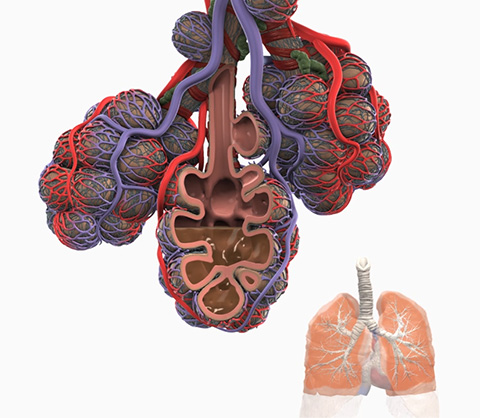Stutents’ education has been disrupted and now they face uncertainty. For many, it’s been tough. What’s more, it may be a while before things settle. If the pandemic persists, as now, with waves of localized outbreaks, students will likely need to switch between in-person and remote anatomy instruction, with hybrids of the two along the way. This demands robust teaching strategies and support structures. Anything less and institutions could see student engagement and even enrollment decline. So, what students think about how COVID-19 is changing their anatomy education matters.
Here’s a round-up of the problems students are facing and the positives they see. This includes top tips on how you can ensure technology helps rather than hinders their learning.
Problems Students Face
So, what are the major difficulties students are experiencing with remote learning as lecture halls and classrooms remain mostly silent and anatomy labs sit idle or operate with minimal staff?
Lack of Practical Sessions
Social distancing and local lockdown rules mean students are missing out on prosections, pathology specimens, physical models, imaging and any augmented or virtual reality labs their institution provides. Plus, students now have limited access to clinical sessions with patients or opportunities to practice on each other, for example, to understand the anatomy of movement. And for those attending institutions that have access to a cadaver lab, this too is likely off limits or access limited.
Impact on Performance
Rapid, unexpected implementation of remote learning in anatomy raises worries about performance. Some students may not be ready for such a sudden switch in how their learning is delivered, or indeed, how assessment is offered. Others are concerned that changes will compromise the quality of their education and they will no longer receive value for money.
Equity of Access
Not every student can afford, or has exclusive access to, a device suitable for remote learning – likewise with a reliable connection to the internet. The pandemic has also increased caring responsibilities for certain students in the home. Some may also now be living in a different time zone to their educational institution and/or a difficult domestic situation.
Feeling Isolated and Abandoned
Some students feel cast adrift from their fellow learners and no longer tied to academic supervision or support. Of course, there is also the general social isolation and anxiety of not having in-person contact with instructors, peers, and wider friendship groups.
How Technology Can Help
Technology can help with many of these issues, but first, institutions should address equity of participation issues. This includes, where possible, financial barriers. Faculty may also like to defer using new online modalities of formal assessment until students are ready and hold back on relying too heavily on live teaching methods.
In addition, technology alone is not enough. Students need robust support systems and virtual learning environments that actively encourage them to learn through guided instruction, supervision, interaction, and a sense of community. This begs solutions that enhance the instructor’s presence and reduce the distance between learners including:
- Online chatrooms and collaborative bulletin and discussion boards
- Virtual polls that assess knowledge and provide instant feedback to students in a flipped classroom approach
- Social media, including Twitter
- Organized virtual events and get-togethers
Positives for Students
There are upsides for students in the current situation. Remote learning is exposing them to a broader range of pedagogies and digital resources that may be more suited to their learning style. Students now also have more scope for self-directed learning.
The emergency response to COVID-19 has also fast-tracked some students into the front line of their profession and new virtual healthcare roles.
Key Takeaways
The COVID-19 crisis has injected upheaval and a hefty dose of uncertainty into anatomy students’ education and career plans. Addressing these concerns requires digital solutions and pedagogical approaches that ensure students and their remote learning thrives online.
This involves personalized support systems that enhance the instructor’s presence and reduce the distance between learners, backed by high-quality, dynamic resources.
How Primal Can Help
To boost student participation and strengthen student-teacher relationships, there’s no need to compromise on quality or effectiveness. Primal can help.
Primal has a wealth of accurate and detailed digital anatomy images, animations, videos, quizzes, dissection, and assessment tools ready to use with students. Built on our trusted 3D model, these resources can be customized and are easy to embed in your learning materials and share across your Learning Management System and other communication and collaboration platforms.
Click here to find out more and book a demo.
